Filter by

Stereotype - The role of grave sets in Corded Ware and Bell Beaker funerary p…
Throughout northern Europe, thousands of burial mounds were erected in the third millennium BCE. Starting in the Corded Ware culture, individual people were being buried underneath these mounds, often equipped with an almost rigid set of grave goods. This practice continued in the second half of the third millennium BCE with the start of the Bell Beaker phenomenon. In large parts of Europe, a â…
- Edition
- -
- ISBN/ISSN
- 978-90-8890-940-5
- Collation
- -
- Series Title
- -
- Call Number
- -
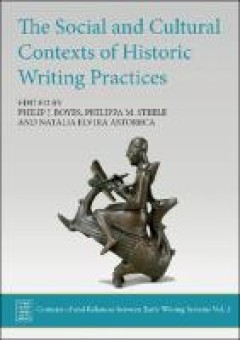
The Social and Cultural Contexts of Historic Writing Practices
Writing is not just a set of systems for transcribing language and communicating meaning, but an important element of human practice, deeply embedded in the cultures where it is present and fundamentally interconnected with all other aspects of human life. The Social and Cultural Contexts of Historic Writing Practices explores these relationships in a number of different cultural contexts and f…
- Edition
- -
- ISBN/ISSN
- 9781789254815
- Collation
- -
- Series Title
- -
- Call Number
- -

Administrating Kinship: Marriage Impediments and Dispensation Policies in the…
From the late eighteenth century, more and more men and women wanted to marry their cousins or in-laws. In this case, bridal couples had to apply for a papal dispensation and this meant a hurdled, lengthy and also expensive procedure. This book shows that applicants in four dioceses – Brixen, Chur, Salzburg and Trent – took very different paths through the thicket of bureaucracy to achieve …
- Edition
- -
- ISBN/ISSN
- 9789004539877
- Collation
- -
- Series Title
- -
- Call Number
- -
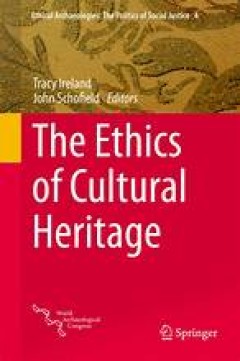
The Ethics of Cultural Heritage
It is widely acknowledged that all archaeological research is embedded within cultural, political and economic contexts, and that all archaeological research falls under the heading ‘heritage’. Most archaeologists now work in museums and other cultural institutions, government agencies, non-government organisations and private sector companies, and this diversity ensures that debates contin…
- Edition
- 1
- ISBN/ISSN
- 978-1-4939-1649-8
- Collation
- XVII, 219, 21 illustrations in colour
- Series Title
- Ethical Archaeologies: The Politics of Social Justice
- Call Number
- -

Viking Age Swords from Telemark, Norway An Integrated Technical and Archaeol…
Viking Age Swords from Telemark, Norway. An Integrated Technical and Archaeological Investigation provides a metallographic analysis of 21 Viking Age swords found in the county Telemark in southeastern Norway. The book is the result of a collaboration between archaeologist Irmelin Martens and chemist Eva Elisabeth Astrup. 220 swords have been found in Telemark, and they are a mix of domestic No…
- Edition
- -
- ISBN/ISSN
- 9788202696856
- Collation
- -
- Series Title
- -
- Call Number
- -

Classification of Lithic Artefacts from the British Late Glacial and Holocene…
A system for the hierarchical Classification of Lithic Artefacts from the British Late Glacial and Holocene Periods is offered in this book. It is hoped that it may find use as a guide book for archaeology students, museum staff, non-specialist archaeologists, local archaeology groups and lay enthusiasts. To allow the individual categories of lithic objects to be classified and characterised in…
- Edition
- -
- ISBN/ISSN
- 9781789698701
- Collation
- -
- Series Title
- -
- Call Number
- -
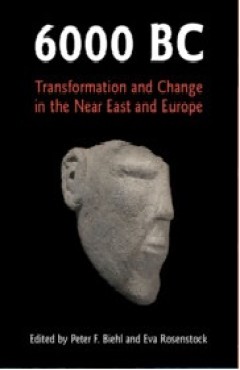
6000 BC: Transformation and Change in the Near East and Europe
This is the first book to present a comprehensive, up to date overview of archaeological and environmental data from the eastern Mediterranean world around 6000 BC. It brings together the research of an international team of scholars who have excavated at key Neolithic and Chalcolithic sites in Syria, Anatolia, Greece, and the Balkans. Collectively, their essays conceptualize and enable a deepe…
- Edition
- -
- ISBN/ISSN
- 9781107337640
- Collation
- -
- Series Title
- -
- Call Number
- -

Theory and Practice in the Bioarchaeology of Care
This book provides the first comprehensive introduction to, and explanation of, the theory and practice of the ‘bioarchaeology of care’, an original, fully theorised and contextualised case study-based approach designed to identify and interpret cases of care provision in prehistory. The applied methodology comprises four stages of analysis, each building on the content of the preceding on…
- Edition
- -
- ISBN/ISSN
- 978-3-319-18860-7
- Collation
- -
- Series Title
- -
- Call Number
- -
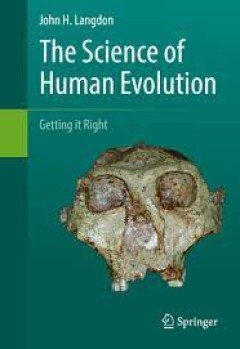
The Science of Human Evolution Getting it Right
This textbook provides a collection of case studies in paleoanthropology demonstrating the method and limitations of science. These cases introduce the reader to various problems and illustrate how they have been addressed historically. The various topics selected represent important corrections in the field, some critical breakthroughs, models of good reasoning and experimental design, and im…
- Edition
- -
- ISBN/ISSN
- 978-3-319-41585-7
- Collation
- -
- Series Title
- -
- Call Number
- -
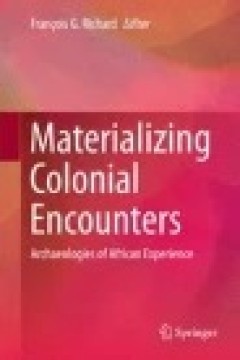
Materializing Colonial Encounters: Archaeologies of African Experience
This volume investigates the material production and expression of colonial experiences in Africa. It combines archaeological, historical, and ethnographic sources to explore the diverse pathways, practices, and projects constructed by Africans in their engagement with the forces of colonial modernity and capitalism. This volume is situated in ongoing debates in archaeological and anthropologic…
- Edition
- -
- ISBN/ISSN
- 978-1-4939-2633-6
- Collation
- -
- Series Title
- -
- Call Number
- -
 Computer Science, Information & General Works
Computer Science, Information & General Works  Philosophy & Psychology
Philosophy & Psychology  Religion
Religion  Social Sciences
Social Sciences  Language
Language  Pure Science
Pure Science  Applied Sciences
Applied Sciences  Art & Recreation
Art & Recreation  Literature
Literature  History & Geography
History & Geography